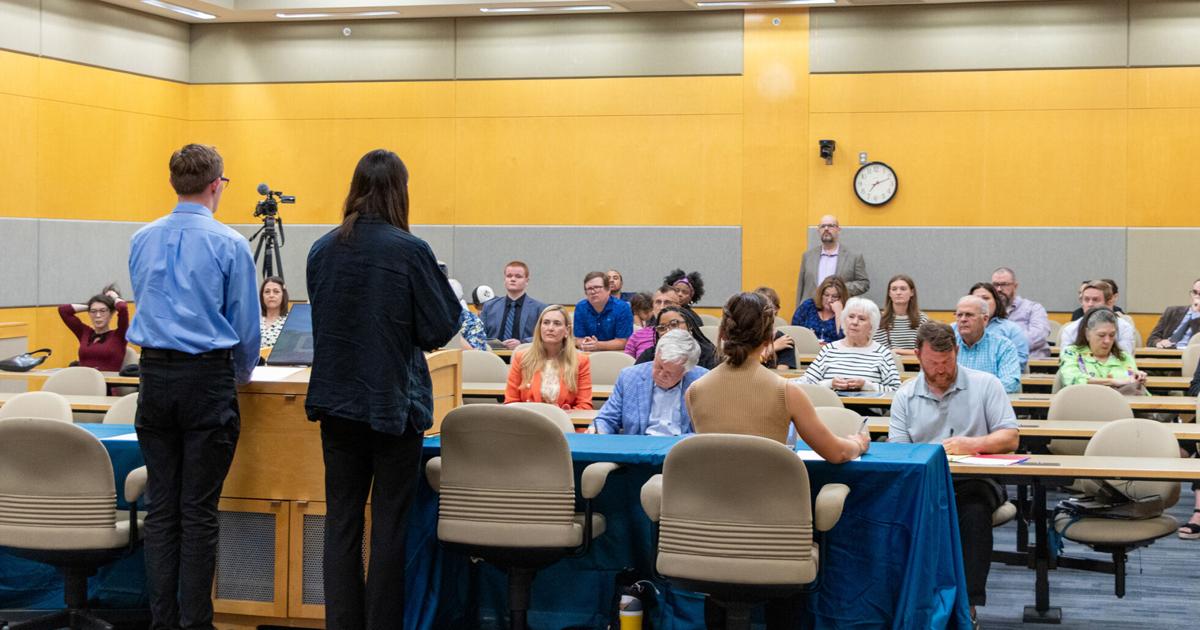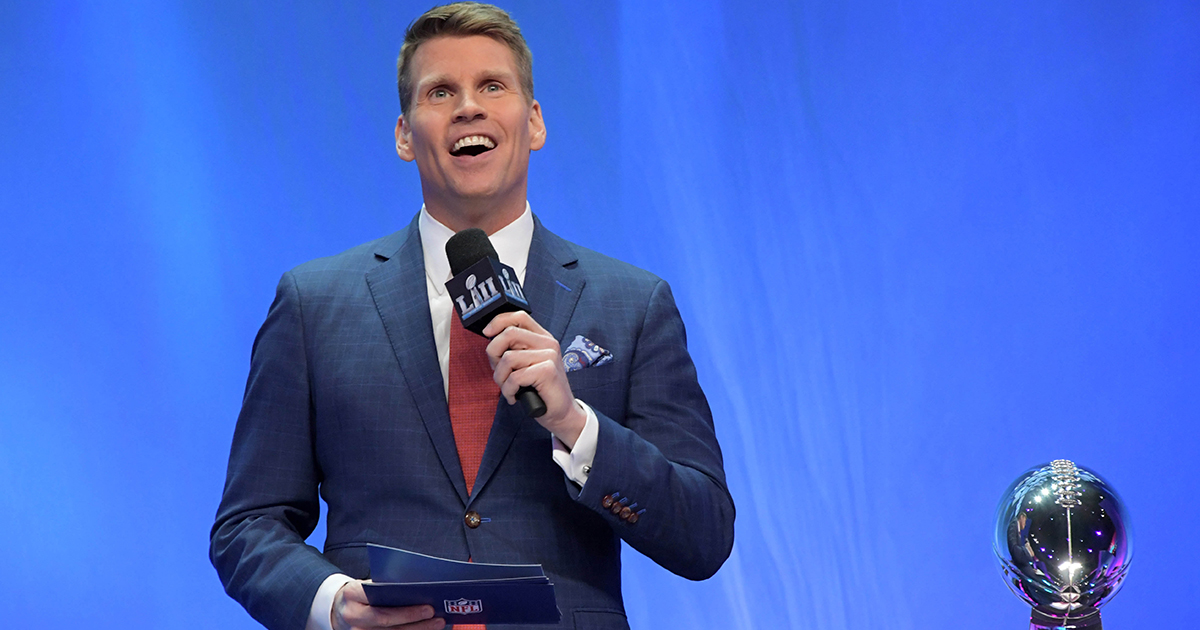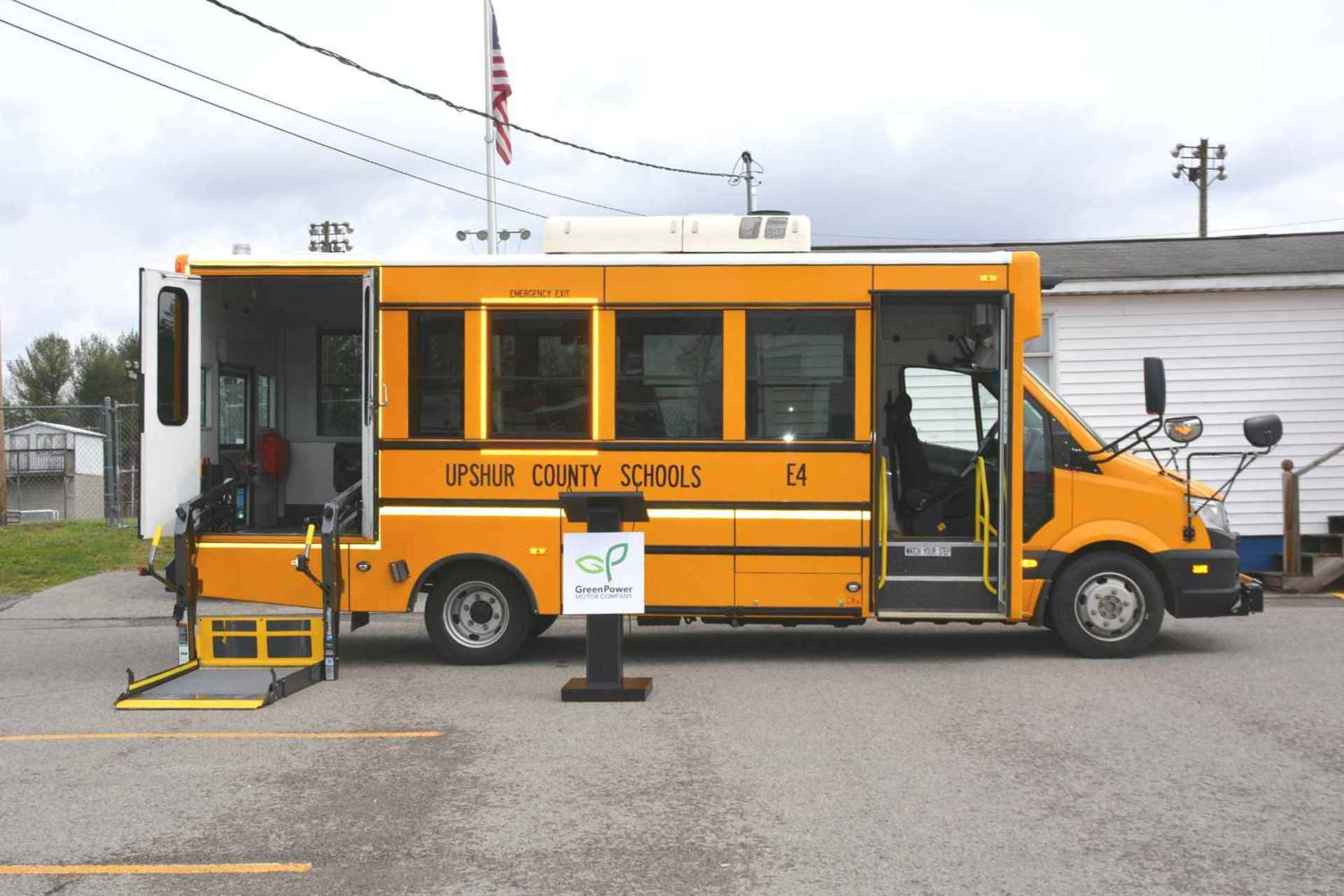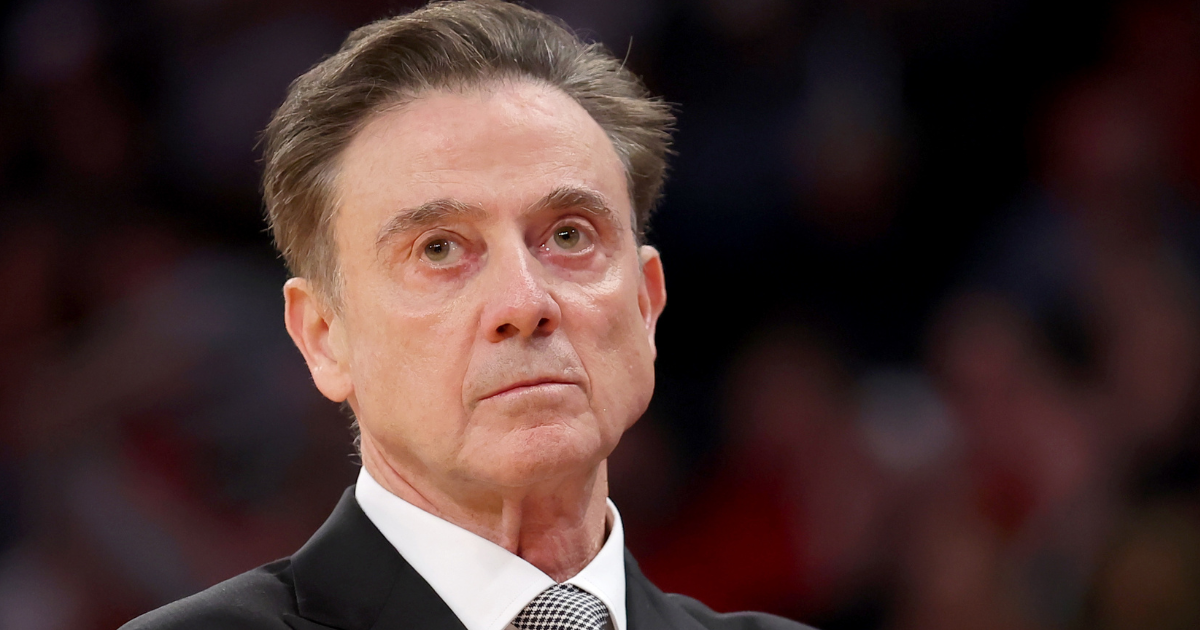NIL
Ginnie Graham
Ginnie Graham Teens and preteens shouldn’t be allowed name, image and likeness sports deals because of potential exploitation, harm to small schools, and damage to the spirit of youth and amateur athletics. Then again, NIL deals in Oklahoma high schools are already happening. So instead of trying to reverse course, it’s better just to reform […]



Teens and preteens shouldn’t be allowed name, image and likeness sports deals because of potential exploitation, harm to small schools, and damage to the spirit of youth and amateur athletics.
Then again, NIL deals in Oklahoma high schools are already happening. So instead of trying to reverse course, it’s better just to reform the system.
That’s the summation of the nation’s first Sports Debate City Championship, which was held Wednesday at the University of Tulsa College of Law and featured teams from Tulsa’s Rogers High School and Charles Page High School in Sand Springs.
At the end, I couldn’t choose a winning team. The students were that closely matched. My inclination remains against NIL for teenagers, with mounting frustration that state officials aren’t doing enough to protect kids.
The National Association for Urban Debate Leagues chose the Tulsa Debate League to be the pilot project for expanding into debates devoted to sports topics.
People are also reading…
There’s nothing wrong with the typical high school debate topics. But, honestly, subjects like government exploration of the Arctic, intellectual property rights and the establishment of a comprehensive bilateral trade agreement with the European Union just aren’t as attention-grabbing as NIL.
“Sports is relevant to debate,” said Rhonda Haynes, executive director of NAUDL. “Unfortunately, not a lot of people know about debate. Sports (topics) could create more access and grow an audience, not just for students but adults, as well.”
The Tulsa Debate League remains one of my favorite youth nonprofits. It was founded in 2013 when the only debate team in Tulsa Public Schools was at Booker T. Washington High School. Mostly only private schools could afford debate.
The nonprofit, led by Executive Director Ross Faith, starts and supports programs in public schools. It has a particular knack for finding professionals who are debate alumni and enlisting them as volunteers and donors. The Tulsa Debate League now assists 29 programs in TPS, including at 13 elementary schools, by providing curriculum and volunteers. It hosted 10 debate tournaments during the past school year.
Through these efforts, public school students who never would have learned debate skills now qualify and win state and national awards. They learn how to research and how to argue both sides of an issue. They experience how to disagree respectfully.
“There’s a connection between sports and debate, and that’s competition,” Faith said. “Law is a common pathway for debaters, and there’s a connection between law and sports. Three of the four major league sports commissioners are lawyers. League offices are full of lawyers. So this is among the many pathways there are for debaters.”
The arguments for and against name, image and likeness rights
The debaters came at the NIL topic with research, anecdotes and personal examples. Student Ethan Josefchuk of Rogers High School had been in debate for only a month when he earned a spot in the championship with fellow student Iliel Hurtado Valle.
Josefchuk argued the position in support of NIL benefits at the high school level, calling for “responsible reform.”
“Eliminating NIL is both unrealistic and unfair,” Josefchuk said. “Instead, we advocate for refining the system to make it more equitable and protective of all students.”
The Rogers team likened NIL deals to student actors getting paid for acting gigs or youth cashing in as social media influencers. Their other points: NIL packages incentivize students to participate in sports, and it teaches skills like marketing and financial literacy. They say it would boost school sports over competitive club leagues.
The team acknowledged that inequities exist among schools and various sports, so the goal should be putting in guardrails to close those gaps.
“This is not about whether NIL is perfect. It’s about whether we can improve opportunities,” Hurtado Valle said. “NIL empowers students to earn and grow and stay involved in schools. Let’s not punish ambition. Let’s protect and guide it.”
OK, decent points. I almost changed my mind, but the Sand Spring team came up with good counterpoints on NIL harms to youth.
Recently graduated senior Gracie Gifford, a three-year wrestler and track and field athlete, said NIL deals would only widen inequities, particularly between male and female sports, and erode critical lessons such as teamwork.
“The pursuit of individual NIL deals often overshadows team achievements, which is what high school athletics is all about — growth, amateurism and a competitive environment that prioritizes team success,” Gifford said.
“NIL deals repetitively exclude female athletes. Very few NIL collectives target female athletes because they are looking for what is worth more financially. Unfortunately, we all know that is primarily masculine. There is a clear difference between female wrestlers and male football players in NIL deals.”
Her debate team partner, Braden Fowler, emphasized possible exploitation of youth. Teenagers who lose interest today can quit with little fallout. That could change if big money is on the line. Parents could force their children to keep playing against their will, or NIL donors could exert their influence in toxic ways.
That’s the convincing argument for me. I’ve seen so much bad parental behavior at just the possibility of a kid playing college sports. That’ll be so much worse with NIL.
NIL deals would benefit larger, richer schools with more businesses able to offer lucrative packages, Fowler argued.
“Elite talent is being concentrated in a handful of schools with large fan bases and NIL collectives, leaving smaller fan bases with little hope of recruiting the star players,” he said.
I wasn’t alone in not identifying a clear winner. Veteran debaters and coaches in attendance were reluctant to name the standout team.
“This was an incredibly well-matched debate,” Faith said.
No winner was named because this was a public showcase of the new program. That’s a little ironic, considering this is about sports.
But judges were present to give feedback: Russell Fisher, associate athletic director for compliance at the University of Tulsa; Brentom Todd, deputy chief of staff for the Tulsa Mayor’s Office; and Rick Horrow, chairman of Florida-based Horrow Sports Ventures and the strategic adviser for the sports debate pilot.
“Sports makes debate cool, and debate makes sports more inclusive,” Horrow said. “I’m excited to be part of this program.”
The prevalence of NIL money in Oklahoma high school football
Tulsa World Sports Columnist Bill Haisten previews his story on how much money is being talked about when it comes to the licensing of name, image and likeness of high school football players. After showing up in college football, the contracts are now being signed by high school athletes.
Continue Reading
NIL
Scott Hanson admits he would be open to hosting college football RedZone
With ESPN acquiring the rights of NFL Network, questions have poured in about the future of NFL RedZone. Some have even gone a step further, wondering if college football could get a similar type of show going. Getting everything centralized instead of flipping channels or using multiple screens would help fans across the country. Turns […]

With ESPN acquiring the rights of NFL Network, questions have poured in about the future of NFL RedZone. Some have even gone a step further, wondering if college football could get a similar type of show going. Getting everything centralized instead of flipping channels or using multiple screens would help fans across the country.
Turns out, Scott Hanson would be interested in hosting college football RedZone. He spoke directly to ESPN officials when appearing on The Rich Eisen Show. As hard as it may be to believe, Hanson claims to be just as passionate about college football.
“If Bob Igor, Jimmy Pitaro want to hit me up,” Hanson said. “I love college every bit as much as I love the pros.”
Hanson does admit there might be some challenges with college football RedZone, though. One of which does involve ESPN and other networks. If ESPN is going to host the program, other networks likely will not be willing to allow the Worldwide Leader to broadcast their games. A collaborative effort with the likes of CBS, FOX, and NBC might be required.
Another would be different kickoff times throughout the sport. College football is different than the NFL, where there are really only two time slots during a normal Sunday slate.
“There’s a lot of different dynamics,” Hanson said. “If you were to do a college football RedZone. First of all, ESPN doesn’t have the rights to every contract. Second of all, the kickoffs are not all synchronized. Yeah, you get a good batch kicking off at noon ET but they’re not all synchronized, they’re all at different times.”
Hanson also believes college football not being as popular, when compared to the NFL, might be a problem. No sport in America is consumed more than the NFL throughout the calendar year — even when the season is not ongoing. College football, while still immensely popular, is just not at the same level.
Still, the upcoming Week 1 schedule might be a perfect example of why college football RedZone is needed. Three top-10 matchups are set to take place after the preseason AP poll was released on Monday afternoon. All in different time slots, fans want to watch the big-time matchups while still focusing on their own team.
If ESPN does want to take on the project, it can at least check off one box. Hanson appears more than willing to be the show’s host.
NIL
Tom Brady questions priorities in college football’s NIL era
College football looks different from Tom Brady’s days at Michigan, when the future Hall of Fame quarterback played in an era where athletes couldn’t capitalize off their name, image and likeness. Now, college athletes can make millions of dollars. That, coupled with the frequent use of the transfer portal, has Brady thankful he didn’t need […]

College football looks different from Tom Brady’s days at Michigan, when the future Hall of Fame quarterback played in an era where athletes couldn’t capitalize off their name, image and likeness.
Now, college athletes can make millions of dollars.
That, coupled with the frequent use of the transfer portal, has Brady thankful he didn’t need to deal with some of what athletes do now.
“My college experience was very challenging. It was very competitive,” Brady said on “The Joel Klatt Show.” “Those traits transformed my life as a professional. I was ready to compete against anybody, because the competition in college toughened me up so much that I had a self-belief and self-confidence in myself that whatever I faced, I could overcome that.
“I think if we take that away from a young student athlete, to say, ‘You know what, I know, it’s tough to compete, but what we’re going to do before you have to compete, we’re actually going to put you somewhere else so that you don’t have to compete,’” he continued. “That is absolutely the wrong thing to do to a young child.”
Brady didn’t blame the athletes, but rather challenged their parents to “teach your kid the right values.”
“The value isn’t always about the last dollar,” he said. “We’re valuing the wrong things. I’m not saying it’s not important. It’s one of 10 things that are important, and certainly to me, it’s not the most important. So when kids do go through that the right way, they’re actually learning the right values. When you have the right values in life, that’s going to sustain you as you move on through the rest of your life.”
This isn’t the first time Brady has been critical of where college football is going. During a 2024 appearance on the “Stephen A. Smith Show,” Brady said the current state of the NFL has been “dumbed down” because there are no longer college programs, just college teams.
Brady played at Michigan from 1995-1999. His path to become the Wolverines’ starter was an uphill climb. But things are different now in the college football landscape. Athletes want to go where they’ll have a chance to not only play, but make money during their college years.
And Brady wonders if they’ll prioritize making money over learning sustainable traits.
“Their frontal lobes aren’t even fully developed yet, and now we’re tempting them with real-life, adult situations and their parents, and now they have agents,” Brady said. “I’m sure it’s a very confusing time, and I’m sure a lot of parents are confused. I’m sure a lot of kids are confused, but because we’re just talking about money, money, money, money, like, that’s the only value in college. Is that what we’re saying? That, to me, the priorities are a bit messed up.”
If you purchase a product or register for an account through a link on our site, we may receive compensation. By using this site, you consent to our User Agreement and agree that your clicks, interactions, and personal information may be collected, recorded, and/or stored by us and social media and other third-party partners in accordance with our Privacy Policy.
NIL
NIL is Now Approved for WV High School and Middle Schoolers
CHARLESTON- In the latest episode of things we thought we would never see, NIL (Name, Image, and Likeness) has now been approved for high schoolers and middle school athletes in West Virginia which means players can be paid to play high school–and yes, middle school– sports in the Mountain state. The WVSSAC approved the policy […]



CHARLESTON- In the latest episode of things we thought we would never see, NIL (Name, Image, and Likeness) has now been approved for high schoolers and middle school athletes in West Virginia which means players can be paid to play high school–and yes, middle school– sports in the Mountain state.
The WVSSAC approved the policy last month and went into full effect last Friday.
Things are a little confusing because if a player participates in a local commercial and receives funds from that company or business, they cannot mention their school name or wear any clothing with their school’s logo because THAT would damage their eligibility as an amateur athlete.
Also, no school employees of any kind, including coaches can be involved in the student’s NIL’s use. The WVSSAC encourages students and parents to reach out to the Director of Compliance for eligibility questions and concerns.
How it Started:
NIL began at the college level in 2021 and was actually spearheaded by former WVU running back Shawne Alston. He disagreed that a school could make millions of dollars off an athlete’s name and the athlete received nothing. Well, legally.
When NIL started, it was meant for players to receive a portion of funds for autographs, memorabilia sold, and things like that. However, it has turned into a free-for-all with almost literally no end in sight, although there have been discussions about dollar limits, but that is most likely a few years down the road.
NIL
NIL Oversight Tightens as Athlete Payments Reach New Scale
Last Updated on August 11, 2025 More than $1.6 billion in NIL money is expected to paid out to college athletes this year according to Opendorse, much of it managed by outside parties with little direct supervision. The arrangement has added pressure on athletic departments already dealing with contract disputes, confusing tax requirements, and uneven […]

Last Updated on August 11, 2025
More than $1.6 billion in NIL money is expected to paid out to college athletes this year according to Opendorse, much of it managed by outside parties with little direct supervision. The arrangement has added pressure on athletic departments already dealing with contract disputes, confusing tax requirements, and uneven application of existing rules. Federal agencies may soon be stepping in to reassert control.
An executive order from President Trump has asked the The Department of Education, Department of Justice, the Department of Labor, and the Federal Trade Commission to get involved by providing guidance and clarifications focused on issues ranging from the application of Title IX with regards to revenue sharing to athletes’ status as non-employees.
As athletic departments begin to implement revenue sharing, some compliance departments have started pointing to industries where large sums move cleanly, without delays or extended oversight. According to Esports Insider payout speed insights, top betting platforms now process user withdrawals in minutes through fully automated systems built for simple, secure, and instant payments. With the gap in speed and certainty growing, these differences in infrastructure are reshaping how programs weigh reliability and turnaround speed.
New guidelines put in place by the NCAA this July place direct responsibility on schools to manage funding streams with reporting guidelines in place. Instead of relying on third-party organizations, institutions will soon be required to structure NIL payouts under a regulated cap, with up to $20.5 million annually permitted for direct distribution to athletes.
That figure, which sits outside the scholarship budget, marks the beginning of a phased system expected to reach $33 million per year, per institution, over the next decade. Most of the money will still concentrate on football and men’s basketball, but that may change if there are future Title IX challenges or guidance from the federal government.
In response, several Division I universities have started building their own NIL tracking tools, borrowing from fintech models that show payments as they happen. These systems are still in early stages, but what once felt like a chaotic experiment is settling into a $1 billion system that demands precision, and those adjusting in motion are already setting the pace.
NIL
Rick Pitino speaks on coaching future, eventual retirement plans
Rick Pitino is entering the 37th season of his career as a head coach in college basketball. However, in turning the age of 73 next month, retirement naturally continues to come up with Pitino. Pitino addressed his future in coaching and eventual retirement in an interview with Jon Rothstein on ‘Inside College Basketball Now’ on […]

Rick Pitino is entering the 37th season of his career as a head coach in college basketball. However, in turning the age of 73 next month, retirement naturally continues to come up with Pitino.
Pitino addressed his future in coaching and eventual retirement in an interview with Jon Rothstein on ‘Inside College Basketball Now’ on Monday. He referenced other older coaches across sports that proved that, so long as he is willing able to do it, he’ll have what it takes to remain on the sideline until he decides otherwise.
“Yeah, you know, you hit the nail on the head,” said Pitino. “As long as you’re physically and mentally able to do it, there’s no reason (to retire)…As long as you have great passion, as long as you have great passion, you love the game, you love coaching.”
Pitino is already one of the greatest coaches in the history of collegiate ‘hoops. He’s top-five all-time in wins, with a chance to move into third as early as this season, with 885 victories while, in leading all six of his programs to the NCAA Tournament, being the only coach to win a national title at two separate schools with one apiece at Kentucky (1996) and Louisville (Vacated – 2013). That includes his latest, current tenure in turning around St. John’s at 51-18 (.739) overall the last two years while, this past season, coming off conference titles in the Big East and one of the program’s highest-ever seeds in March Madness to earn himself the honor as Co-AP National Coach of the Year.
With that, not even including his professional experience in the states and overseas, Pitino is going to retire at some point as an all-time great. It’s just a matter of if he ends his career in college with the Red Storm, pending what continues to happen across the sport as a whole, or if he’d decide to go back for another stint in Europe.
“I get asked this all the time – Would you want to coach anywhere else? Would you want to go back to professional basketball?” said Pitino. “I love the EuroLeague. I could see myself possibly coaching there again. But I don’t see myself coaching anywhere else in college basketball. Last year, two or three schools called me to see if I had any interest in moving on, and I said, nah, I don’t really have any interest in moving on because I’m really enjoying playing at Madison Square Garden. But, I don’t think I’d want to coach in the NBA ever again. It’s too many games. So, I think I’m pretty much (here).”
“You don’t know what’s going to happen landscape-wise. I wanted to go three years at St. John’s minimum. I wanted to try to complete my contract. But, I’ve got the three years in and let’s see what develops with college basketball, how much is it going to change,” Pitino said. “I don’t know right now.”
Back in April, Pitino gave himself three to five more years, which could mean he would at most finish out this decade. Still, all things considered right now, especially not knowing what else he’d do besides coach, he’s in a great place, and has even been reenergized in the job, with his present work in Queens.
“(St. John’s) is just a thrill for me,” said Pitino. “(Coaching) keeps you young. It really does keep you young. You know, (Richard Pitino) and I had a huge discussion the other night. He said, ‘Why would you ever retire?’. And I said, well, you get on in age. And he said, ‘Yeah, but, what would you do?’, he said, ‘You suck at golf. What else would you do?’…I said I agree with you. You know, I don’t know what else I would do. I think the blessing for me is, I was two years out of the game and, boy, did I miss it. Boy, did I miss it…If I’m without basketball, I think I would age considerably.”
“When you’re around 13, 14 young players? Like, I’ve had the greatest summer this year I could have,” Pitino said. “Professionally, as far as basketball is concerned, it was the best summer I’ve had in a long time because these athletes…wanting to learn so much about the game was so refreshing. These guys were absolutely great.”
We probably only have a handful of seasons left to see Pitino coach, specifically so in the college game. That said, as long as he’s able to, Pitino will stay on the sideline until the time comes that he can’t or won’t any longer.
“If you’re healthy, if you’re with it? Just make it happen,” said Pitino. “Make it happen.”
NIL
Verma to guide Mizzou through NIL and roster planning |
Mizzou football coach Eliah Drinkwitz has made one thing clear on Missouri’s hire of Gaurav Verma: He is not a general manager. While the GM position is becoming a more prevalent role across other programs and sports — including Tim Fuller for Mizzou men’s basketball — it isn’t something Drinkwitz is currently seeking. Instead, Verma […]

Mizzou football coach Eliah Drinkwitz has made one thing clear on Missouri’s hire of Gaurav Verma: He is not a general manager.
While the GM position is becoming a more prevalent role across other programs and sports — including Tim Fuller for Mizzou men’s basketball — it isn’t something Drinkwitz is currently seeking.
Instead, Verma will step into a role as director of football strategy and finance.
“I just want to make it clear: he’s not a GM. … That’s not even kind of what we did,” Drinkwitz said Saturday in a news conference. “It’s really just roster construction; he doesn’t have the ability to fire me.”
Verma will be the business guru of sorts for Missouri, or as Drinkwitz likes to call it, “G-Money.” The idea of his role is navigating the program through revenue sharing and contract management amid the expansion of NIL with the $2.8 billion House settlement.
With plenty of experience under his belt in the finance world, Verma has the credentials to take on such a role.
What is Verma bringing to Mizzou?
Verma received a bachelor’s degree in economics and political science from Johns Hopkins in 2017. He later earned an MBA in finance from MIT in 2023.
Verma’s experience primarily consists of investment banking and data science. However, his most recent position came with the Denver Broncos as a salary cap specialist, per a Mizzou Athletics news release. According to his LinkedIn profile, it was also an administrative role.
Although the NFL salary cap is different than that of college football, Verma seems to be tackling a similar job with Missouri. Now that athletic departments can share up to $20.5 million of revenue with student-athletes, having someone with his background can help ensure the football program’s share is distributed properly.
What Verma provides isn’t going to directly translate on to the field, but he will be an important part of what the Tigers can build in the future.
“With college football evolving rapidly through revenue sharing and strategic roster management, I’m excited to apply my background in finance and the NFL to help Mizzou build sustainably competitive teams on the sport’s biggest stage — the SEC,” Verma said Friday in a news release.
What does the role mean?
Verma is the first-ever director of football strategy and finance at Mizzou, so there isn’t much groundwork to estimate what his impact could look like. However, there are enough details to get an idea.
These following job responsibilities are stated in the news release:
- Roster, scholarship and revenue cap planning
- Talent evaluation and scouting operations
- Recruiting calendar and logistics
- Analytics and recruiting infrastructure
- Compliance, NIL and interdepartmental collaboration
Verma will be reporting directly to Drinkwitz on any matters, while also collaborating with the “recruiting staff, compliance department, athletics administration and Every True Tiger Brands.”
So, what does that all mean?
Unlike Fuller, Verma isn’t expected to handle much of the player and agent relations. His job ultimately comes down to strategic planning for the program’s finances — an area that Drinkwitz can now take less of a responsibility in. The NIL expansion brings a lot of question marks, but he can help answer them.
As Drinkwitz mentioned Saturday, Verma will be able to inform the program on what the contracts of players look like. The third-string running back, a second-year returner and incoming recruits all bring different value, and he can determine what the designated salary for each should look like. In roster building, this should ensure stability and continuity.
As college athletics undergo substantial changes, Verma’s hire puts Mizzou in a position to be ready for them.
-

 Health1 week ago
Health1 week agoThe Women Driving A New Era In U.S. Ski & Snowboard
-

 High School Sports3 weeks ago
High School Sports3 weeks ago100 days to men's college basketball
-

 Technology2 weeks ago
Technology2 weeks agoAlly Runs New Game Plan in WNBA All-Star Rookie Debut
-

 NIL2 weeks ago
NIL2 weeks agoESPN Announces 'dont wait run fast' by mgk as New College Football Anthem for 2025
-

 College Sports3 weeks ago
College Sports3 weeks agoBYU Basketball Adds Aleksej Kostic to 2025
-

 College Sports2 weeks ago
College Sports2 weeks agoCity rows to sporting destination goal on boats of new complexes & old strengths
-

 Sports2 weeks ago
Sports2 weeks agoNtekpere honored as Second Team Academic All-American | APG State News
-

 Health2 weeks ago
Health2 weeks agoTrump administration investigates Oregon's transgender athlete policies
-

 Rec Sports6 days ago
Rec Sports6 days agoSwimming & Diving Comments on the Rules – 2025-26
-

 Technology6 days ago
Technology6 days agoAmid Sports Chaos, ‘Known’ Data and Outcomes Help Agency Win
































